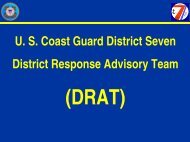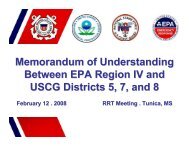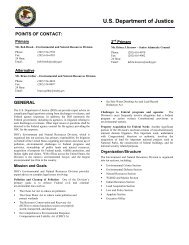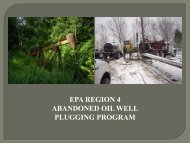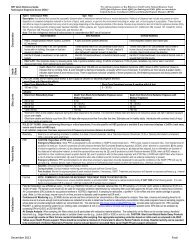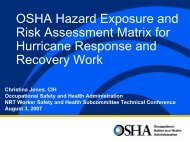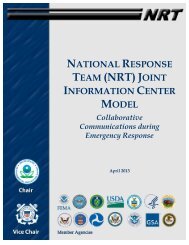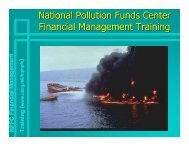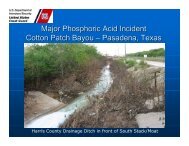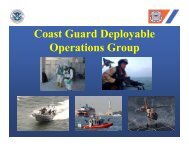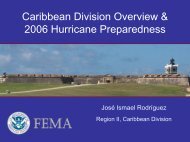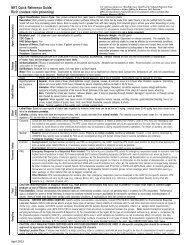USE OF DISPERSANTS - U.S. National Response Team (NRT)
USE OF DISPERSANTS - U.S. National Response Team (NRT)
USE OF DISPERSANTS - U.S. National Response Team (NRT)
- No tags were found...
You also want an ePaper? Increase the reach of your titles
YUMPU automatically turns print PDFs into web optimized ePapers that Google loves.
The CRRT has not currently designated any waters of Puerto Rico as Red Zones. For the U.S.Virgin Islands the following areas have been designated as Red Zones:1) Waters of the Virgin Islands <strong>National</strong> Park including waters one mile seaward from the parkboundary.2) Waters of the Buck Island Reef <strong>National</strong> Monument including waters one mile seaward fromthe park boundary.If the USCG-OSC believes dispersants should be applied outside pre-authorized areas a request forauthorization must be made to the CRRT representatives of the EPA, affected State(s), DOC, and DOI.The OSC is only granted authority to conduct dispersant operations when concurrence has been given byEPA and the affected State(s), and after consultation with DOC and DOI.8. Are The Necessary Equipment And Trained Personnel Available To Conduct TheRecommended Monitoring Operations?In accordance with the SMART, which is recommended for use by the CRRT, the U.S. Coast Guard'sGulf Strike <strong>Team</strong> and/or the Atlantic Strike <strong>Team</strong> are available to provide monitoring assistance. Giventhe problems associated with estimating dispersant effectiveness, and the myriad of factors affecting theeffectiveness of a dispersant in the field, CRRT addresses the monitoring program in the form ofrecommendations. CRRT endorses the SMART monitoring protocols and believes they offer the bestavailable methods for estimating dispersant efficiency - and therefore recommends that all efforts bemade to implement these monitoring procedures. CRRT does not, however, believe that these protocolscan consistently and accurately provide definitive "Go/No-Go", "Continue/Discontinue" data to the OSC,and therefore does not require that the results of SROMP monitoring necessarily dictate whetherdispersant operations will continue. An inability to perform SROMP monitoring protocols will notnecessarily be grounds for cessation of dispersant operations.9. Has The Overflight To Assure That Endangered Species Are Not In The ApplicationArea Been Conducted?In accordance with Protocols in the CRRT Dispersant Use Policy and with the provisions of the Section 7Consultation conducted for LOAs, an overflight of the application area must be conducted prior tocommencing dispersant application operations. A visual observer of the area should attempt to assure thatno endangered species appear to be threatened by the proposed operations. In the event of continuedoperations, periodic overflights to ensure that endangered species are not present are advisable.Consultations with a resource specialist knowledgeable with the area should be conducted to evaluatewhat risks dispersant application may pose to endangered or threatened species or other resources ofconcern that may be currently present or nearby.



